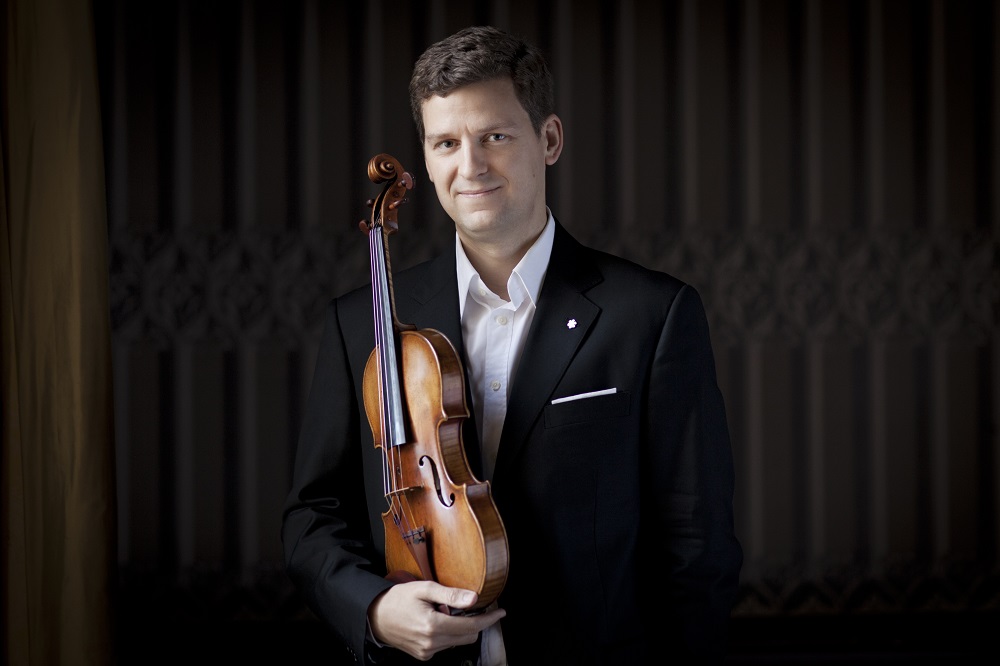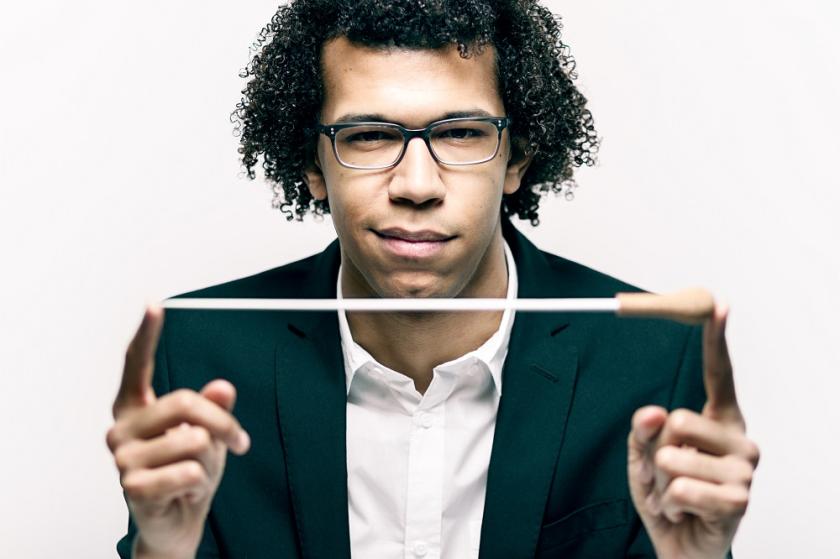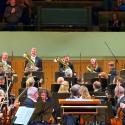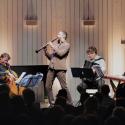Two things to note in Thursday’s Hallé performance at the Bridgewater Hall: the debut in the Manchester main series of their highly talented new assistant conductor, Jonathon Heyward, and another stride along the road towards the Hallé/Elder complete edition of the Vaughan Williams symphonies. Oh, and there was a very fine piece of virtuoso violin playing from James Ehnes, whose performance of Bruch's Second Violin Concerto would probably have been the headliner in any other circumstances … and the revelation of an unusual piece by Janáček.
So, to begin at the beginning. Heyward is a young American (from Charleston, South Carolina) and completed his studies at the RAM under Sian Edwards. Judging by his handling of Mendelssohn’s Fingal’s Cave Overture, he’s one of those who has simply got it as a conductor. From the articulation of the first note on the bassi, through beautifully judged pacing and phrase shaping, he made the music ebb and flow as it should with both momentum and smoothness. There was a vivid change of instrumental colour in mid-voyage, and the clarinet duet was lovingly played by new Hallé principal Sergio Castelló López and his colleague Jill Allan. Sentimental? Yes, a shade so, but this is early Romanticism and it should be.
Sir Mark Elder took the rostrum for the remainder of the programme, with the Bruch concerto first. It was written for Sarasate, and you can hear the flashes of Zigeunerweise virtuosity - or at least a Teuton’s idea of it - obligingly provided by the composer for his soloist. James Ehnes (pictured below by Benjamin Ealovega) had no hesitation about despatching those, and it also gave opportunity for his impeccable double-stopping to be heard.

The piece is revolutionary and yet not so, beginning with its slow movement and going on to two allegros yet including all the show-off elements expected in 1877, but the opening sonata-form Adagio is still its meatiest. There are little surprises of charm throughout, as Bruch hunts for (but does not entirely find) the sweet longing of his earlier masterpiece. Conductor and soloist gave it their most positive spin, however.
Janáček’s Jealousy (Žárlivost) was originally to have been the overture to Jenůfa. It looks as if he never used it, but it’s based on a folk song with a murderous story that’s reflected in the opera. Elder’s life-blood is still in the theatre, and he relished the evocation of drama and atmosphere that’s evident in this overture – simultaneously catching the lilt of Janáček’s writing in folkish mien. The Hallé brass made crisp, incisive work of their prominent role in the later part of the work.
The Scherzo is the big challenge, rattling along as if to take us all to hell in a handcartIt was the brass again, but in a different style entirely, who were crucial in the opening pages of Vaughan Williams’ Sixth Symphony. It’s the mirror image of a grand-finale symphony, with constant power and fury in the first movement, contrapuntal argument and lighter textures in the middle two, and then a bleak final statement in which no instrument is to play any louder than pianissimo all the way through. The cross-rhythmic writing is intensely complex in many sections of the piece, and one of the greatest virtues of Elder’s reading - and one which will become still more apparent in the recording which is to follow this performance and its rehearsals, I surmise - was the clarity he brought to every page.
VW had started writing film music by the time he put this symphony together, and instantaneous emotional effect is there on almost every page. In this performance there were intensely contrasted characterizations of the main themes, too – the troll-like grotesquerie apparent early in the first movement, the soaring modal hymn to which he brings his second theme, the magic of multi-divided strings in the second movement, and the Holst-like "niente" fade-out at the very end were among those that stayed in the memory.
The Scherzo is the big challenge, rattling along as if to take us all to hell in a handcart, and Elder and the Hallé were on top of that. And then the finale calls for something very sustained and even, letting the changing textures make their impact unaided. The pianissimo brass were vital to that effect, too. This night brought the Hallé’s recorded Vaughan Williams symphonies tally to seven, if I’m not mistaken (No. 4 and of course this one still to appear). Bring on the rest.















Add comment